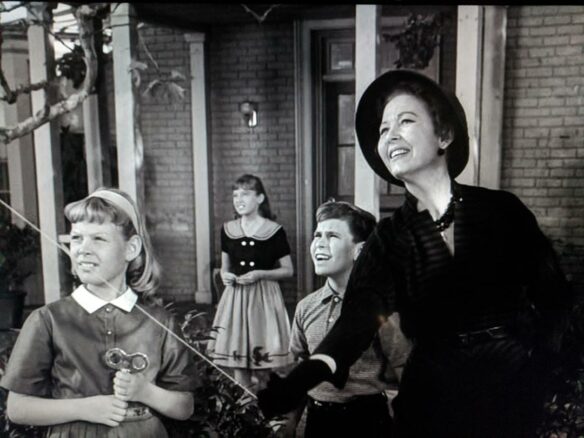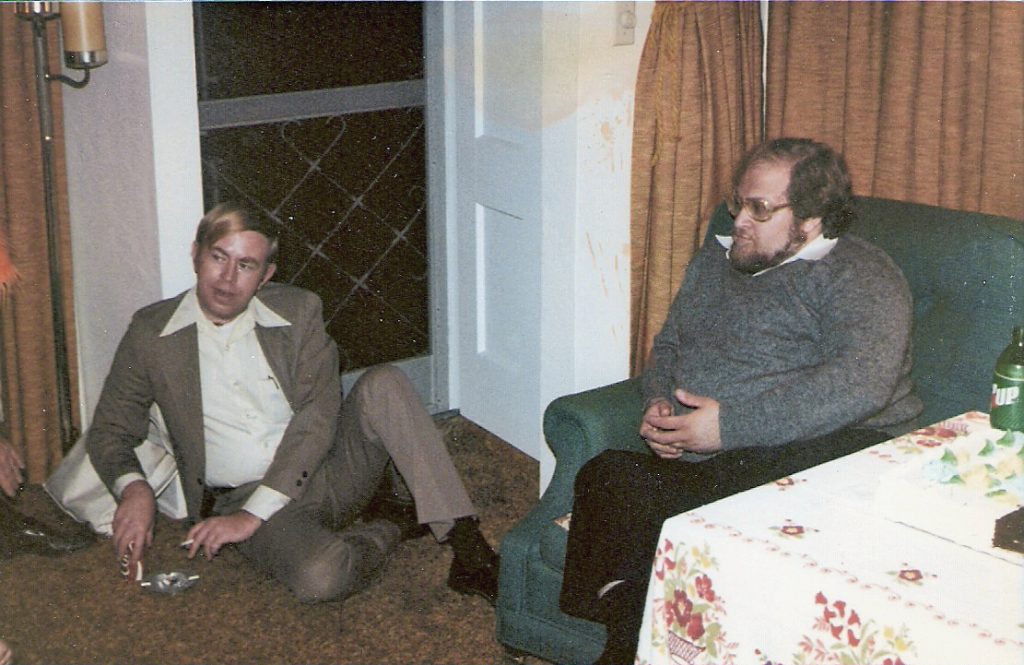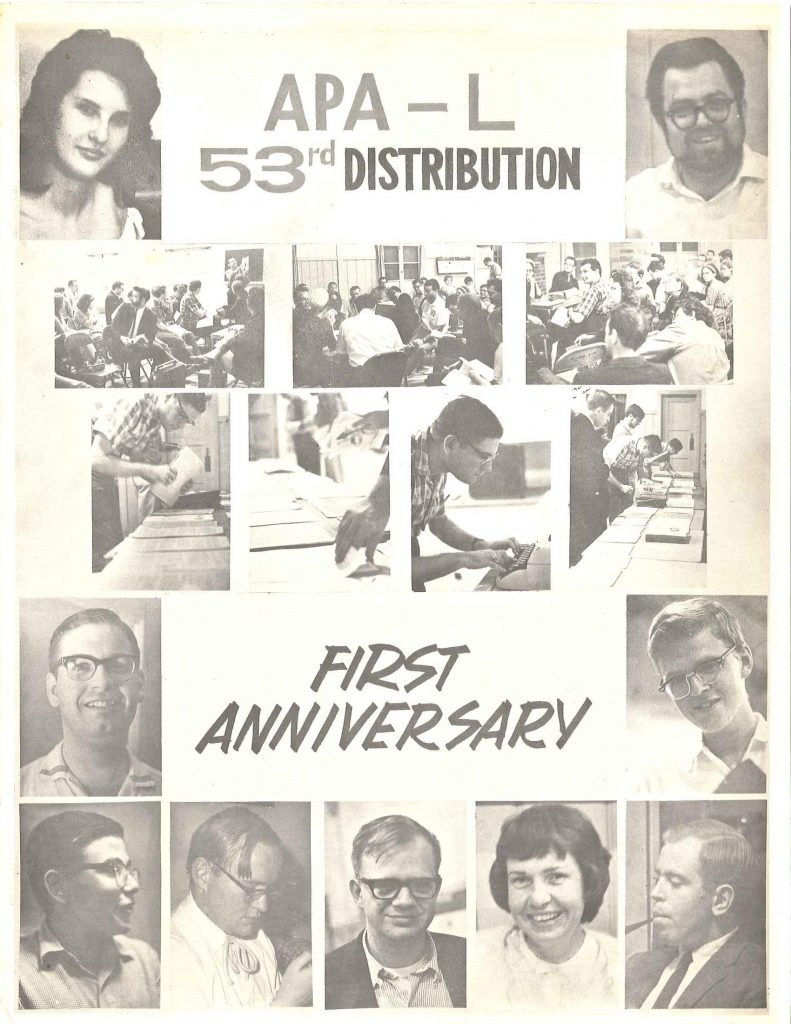(1) AI AND THE NOVEL. [Item by SF Concatenation’s Jonathan Cowie.] The march of artificial intelligence (AI) continues relentlessly: bullets won’t stop it… Of concern to SF readers – and greater still, SF writers – is the question of whether AI will successfully compete with authors?
This weekend, BBC Radio 4’s Open Book assembled a panel to discuss this issue. Included on the panel was SF author Naomi Alderman. She is currently writing her new series of novels called The Power series (out by Viking in the British Isles), the title novel of which was short-listed for the Kurd Laßwitz Prize in Germany in 2019.

Elizabeth Day and Johny Pitts present a special edition of the programme exploring AI and the novel.
Recorded at the Southbank Centre’s London Literature Festival; novelists Naomi Alderman, Adam Thirlwell and Julianne Pachico join Elizabeth and Johny on stage to discuss depictions of AI in their fiction – and what AI might mean for fiction.
Naomi Alderman’s new novel, The Future, is the tale of a daring heist hatched in the hope of saving the world from the tech giants whose greed threatens life as we know it. Adam Thirlwell’s The Future, Future takes us from the salacious gossip of pre-revolutionary Paris to a utopian lunar commune, and Julianne Pachico tells the story of a young girl raised by artificial intelligence in her novel Jungle House.
You can download the programme here.
(I keep on telling folk that the machines are taking over, but no-one ever listens…)
(2) TRANSLATING JOAN SLONCZEWSKI TO THE SCREEN. Jeanne Griggs shares notes from a panel discussion about “Filming A Door Into Ocean” at Necromancy Never Pays.
…Last week I moderated a panel at SFAM, Speculative Fiction Across Media, on “Ecofeminism and A Door Into Ocean.” Because the conference was largely focused on ideas about films, I invited the panel members and then the audience to think about issues involving the possible differences between reading the novel and seeing it on screen….
…Casting is another imaginary game for anyone who has read A Door Into Ocean. I would want someone who comes across as thoughtful and maybe isn’t as astoundingly beautiful as many of the actresses in Hollywood for Merwen, and someone who comes across as smart and powerful, someone like Gina Torres, for her sometime antagonist Yinevra. And for Spinel, the young Valan, perhaps someone like Aryan Simhadri, who plays Grover in Percy Jackson and the Olympians….
(3) HOLLYWOOD LAWSUIT. A Los Angeles-based production company sued Tesla, CEO Elon Musk, and Warner Bros. Discovery, alleging that the electric vehicle maker ripped off scenes from 2017 film Blade Runner 2049 to promote its new robotaxi. “’Blade Runner 2049′ producer sues Musk, Tesla, Warner Bros.” in the LA Times (paywalled).
…Alcon Entertainment, which produced the film for Warner Bros., filed the copyright infringement lawsuit Monday in California.
The complaint accuses the Hollywood studio, Tesla and Musk of using artificial intelligence to generate an image resembling scenes from “Blade Runner 2049,” which Musk presented during a launch event for Tesla’s Cybercab on the Warner Bros. studio lot in Burbank. The livestreamed event took place Oct. 10 — shortly after Alcon said it denied a request from Warner Bros. Discovery to use a production photo from the sci-fi film to promote Tesla’s new product.
“Alcon refused all permissions and adamantly objected to Defendants suggesting any affiliation between [‘Blade Runner 2049’] and Tesla, Musk or any Musk-owned company,” the 52-page lawsuit reads.
“Defendants then used an apparently AI-generated faked image to do it all anyway.”…
… “It was hardly coincidental that the only specific Hollywood film which Musk actually discussed to pitch his new, fully autonomous, AI-driven cybercab was [‘Blade Runner 2049’],” the complaint reads, “a film which just happens to feature a strikingly-designed, artificially intelligent, fully autonomous car throughout the story.”
Alcon is demanding a jury trial and potentially hundreds of thousands of dollars in damages.
(4) CINEMATIC DNA. “100 Years Ago, a Forgotten Russian Epic Secretly Inspired the the Most Iconic Sci-Fi Movie Ever”. “Get your communist ass to Mars” is Inverse’s tagline.
It’s unusual for a movie to have inspired creations as diverse as Fritz Lang’s Metropolis and Roland Emmerich’s Independence Day, but a movie celebrating its 100th birthday today can claim just such an accomplishment. Loosely based on a 1923 novel by Alexei Tolstoy, Yakov Protazanov’s 1924 silent film Aelita: Queen of Mars is, in fact, secretly one of the most influential sci-fi movies of all time.
Set in 1921, the film follows a group of people in post-civil war Soviet Russia as they reckon with their place in a rebuilding society. The movie begins with people worldwide attempting to understand a mysterious radio message, and the scene immediately makes Queen of Mars’ influence obvious. Seventy years later, its visuals were echoed by Emmerich as countries around the globe received transmissions from Independence Day’s invaders, then later used Morse code to coordinate a united counter-offensive….
(5) TWO-LEGGED SYLLOGISM OF THE DAY. [Item by Mike Kennedy.] Smart people drink alcohol.
Fans drink alcohol.
Therefore fans are smart.
Wait, something feels off about that logic…
Must. Think. Hard.
ᕙ(⇀‸↼)ᕗ
“Your IQ in High School Can Predict Your Alcohol Use Later in Life” at Science Alert.
When Brown and his colleagues at UT considered socioeconomic factors, they found that household income partially mediated the relationship between IQ and drinking habits, but a person’s level of education did not affect this relationship.
“While it’s not possible to capture all the underlying mechanisms that mediate the relationship between drinking and IQ, we know that income partially explains the pathway between the two,” says neuroscientist Jayme Palka from UT.
Previous studies have also linked higher IQ scores to higher household incomes. In turn, studies have found a relationship between higher incomes and more frequent alcohol consumption, possibly because of the availability of alcohol in this population and “social drinking norms related to prestige/success”….
(6) RON ELY (1938-2024). Actor Ron Ely, best known as star of TV’s Tarzan series, died September 29. The Deadline obituary notes his many other genre roles.
…With his height at 6-foot-4 and a solid athletic build, Ely went on to win the title role in the film Doc Savage: The Man of Bronze. He also appeared in multiple episodes of the series Fantasy Island and starred in the Wonder Woman series’ two-part episode “The Deadly Sting.”
His other credits include The Aquanauts in 1960-61, the Western adventure film The Night of the Grizzly in 1966 and in Jürgen Goslar’s slavery movie Slavers in 1978….
… He continued working well into the ’90s with a role in the Superboy syndicated series….
(7) MEMORY LANE.
[Written by Cat Eldridge.]
Anniversary: Bradbury’s Twilight Zone script, “I Sing the Body Electric” (1962)
This has absolutely nothing to do with today’s date. It’s just something I find really interesting. And I feel that it has a proper autumnal feel to it.
Bradbury wrote one of the shortest opening narrations that Serling gave in the series:
They make a fairly convincing pitch here. It doesn’t seem possible, though, to find a woman who must be ten times better than mother in order to seem half as good, except, of course, in the Twilight Zone. — “I Sing the Body Electric”
Though I didn’t know that Ray Bradbury had a script produced for the one and true Twilight Zone, it doesn’t at all surprise me that he did. I had assumed Serling wrote all of the episodes. Not true as it turns out, to my delight, as we get the “I Sing the Body Electric”.
It is known that he contributed several scripts to The Twilight Zone, but this is the only one that actually was produced. He certainly was no stranger to TV script writing with five scripts for the Alfred Hitchcock Presents series alone.
This would air as the thirtieth-fifth episode of the third season on May 18, 1962. This was one of six Twilight Zones episodes directed by James Sheldon and his co-director William Clazton who did four.
LOOK, GO EAT A CANDY APPLE FOR A MINUTE PLEASE.
Just three words this time— sweet robotic grandmothers. Ok, a few more. My god, this episode drips with cloyness, it does. A recent widower, needing care for his three young children, orders a robotic “grandmother”. Two of the children accept her, but one of his daughters adamantly rejects her, with what might be near fatal consequences.
DID YOU ENJOY THAT CANDY APPLE?
A fable? Most assuredly. But who’s to say at some distant moment there might be an assembly line producing a gentle product in the form of a grandmother whose stock in trade is love? Fable, sure, but who’s to say? — Closing words

(8) COMICS SECTION.
- F Minus finds a higher court.
- Moderately Confused is repelled by corporate jargon.
- Off the Mark makes a good impression.
- Speckticles finds signs of a visitor.
(9) ENDLESS BEEPING. Fanac.org recently added to its online library Milton F. Stevens’ fanzine Passing Parade 2, featuring his insider’s view of working L.A.con, the 1972 Worldcon (and the first one I ever attended).
Milt was the hotel liaison and de facto troubleshooter who responded to about 300 calls to his beeper during the weekend. And that doesn’t count the people who just walked up to make their requests in person. For example:
…Thursday started on a rather strange note. I was eating breakfast as I often find myself doing at the beginning of the day. Then as I was about to leave a woman approached me and asked me if I was involved in running the convention. I was unquestionably involved and I made the mistake of copping-out to it. Then she pounced. Despite her unobtrusive appearance she was in reality selling acrylic fur all-weather blankets and wished to do so at the convention. I explained that our convention was not particularly a merchandising convention except for books and we’d oven sold all the space for that. It soon became apparent that she was a salesman in the worst sense of the word. I couldn’t get rid of her. Suddenly I had one of my occasionally brilliant notions. I explained to her that if she wanted to sell her product at our convention she should bill them as Super Tribbles. I then pointed her in the direction of David Gerrold and suggested that she try renting part of his table. As it turned out, she offered him a commission and he did try selling them at his table. I don’t know what luck he had, but at least I didn’t hear from the woman again….
(10) THIRD AND FINAL, PROBABLY. (But you already know that trilogies don’t always end.)“Venom: The Last Dance review – Tom Hardy’s Marvel sequel is a delight when it’s not being a Madame Web rerun” says the Independent.
…We’re subsequently introduced to more symbiotes, all helpfully colour-coded, and Knull’s squad of symbiote hunters, the xenophages, a generic alien foe save for a quite cool feature that sees them spray a blood mist out the back of their heads every time they chow down on someone. Two accomplished actors, Ted Lasso’s Juno Temple and Oscar nominee Chiwetel Ejiofor, play a scientist and a soldier, respectively – jobs that largely involve peering through observation windows and attempting to fathom the unfathomable.
But Marcel, who’s now added director to her usual screenwriter credit, is well aware of what her film is. Any non-Venom scene flies by like it’s being watched from a passing rollercoaster while, crawling out from underneath the pile of studio demands, appears a tribute to Hardy’s blissfully untethered performance as both host and guttural-voiced parasite. What started as the actor dunking his entire body into a restaurant lobster tank here ends with him hunched over a Vegas slot machine, slamming buttons and pulling cranks as if he were being puppeteered off camera.
Any scene in The Last Dance that concerns Venom and Eddie is a delight, a direct continuation of the series’s charming, broad-purpose metaphor – queer-coded in parts (they refer to each other as Thelma and Louise), and all about self-love and acceptance. Together, they break up a dog fighting ring and ensure the pups all find “loving forever homes”, a particularly Hardy touch considering his offscreen canine advocacy….
(11) PRIME TEAMWORK. [Item by Steven French.] The latest largest prime number has just been found, by one of thousands of volunteers contributing spare computer processing time (and in case anyone is wondering, yes it is very big — over 41 million digits long). “Great Internet Mersenne Prime Search” at PrimeNet.
…This prime ends the 28 year reign of ordinary PCs finding the largest known prime. In 2017, Mihai Preda authored Mersenne prime search software that runs on GPUs. GPUs were primarily used in PCs as video cards or for mining cryptocurrency. Nowadays, video cards are also used to power the AI revolution. Durant’s idea was to use these powerful GPUs that are now available in the cloud and heavily discounted when they are being under-utilized. Luke organized these cloud GPUs creating a kind of “cloud supercomputer” spanning 17 countries. After nearly a year of testing, Luke finally struck paydirt. On October 11, an NVIDIA A100 GPU in Dublin, Ireland, reported that M136279841 is probably prime. On October 12, an NVIDIA H100 in San Antonio, Texas, USA, confirmed primality with a Lucas-Lehmer test….
(12) SEVERANCE TRAILER. Severance has dropped its Season 2 teaser trailer.
In Severance, Mark Scout (Adam Scott) leads a team at Lumon Industries, whose employees have undergone a severance procedure, which surgically divides their memories between their work and personal lives. This daring experiment in “work-life balance” is called into question as Mark finds himself at the center of an unraveling mystery that will force him to confront the true nature of his work… and of himself. In season two, Mark and his friends learn the dire consequences of trifling with the severance barrier, leading them further down a path of woe.
(13) THE FUTURE OF GAME CONSOLES. Keza MacDonald, in “Pushing Buttons”, The Guardian’s gaming newsletter, wonders if advances in console tech have reached the point of dismissing returns: “Is there even any point in making more powerful games consoles?”
Last week, my favoured gaming news site, VGC, asked former US PlayStation boss Shawn Layden whether he thought the pursuit of more powerful consoles was still the way to go for the video games industry. His answer was not what I expected.
“We’ve done these things this way for 30 years, every generation those costs went up and we realigned with it. We’ve reached the precipice now, where the centre can’t hold, we cannot continue to do things that we have done before … It’s time for a real hard reset on the business model, on what it is to be a video game,” he said. “We’re at the stage of hardware development that I call ‘only dogs can hear the difference’. We’re fighting over teraflops and that’s no place to be. We need to compete on content. Jacking up the specs of the box, I think we’ve reached the ceiling.”
This surprised me because it seems very obvious, but it’s still not often said by games industry executives, who rely on the enticing promise of technological advancement to drum up investment and hype. If we’re now freely admitting that we’ve gone as far we sensibly can with console power, that does represent a major step-change in how the games industry does business.
(14) FREE UPDATE OF VIDEO GAME. [Item by N.] Slay the Princess, an inventive dark fantasy horror game that came close to being nominated in the inaugural Best Game or Interactive Work category at the 2024 Hugos, releases its expanded “Pristine Cut” in two days, both as a free update for PC players and a complete release for console owners. Watch the trailer here:
[Thanks to Kathy Sullivan, Teddy Harvia, Mike Kennedy, Andrew (not Werdna), Andrew Porter, John King Tarpinian, Chris Barkley, Cat Eldridge, SF Concatenation’s Jonathan Cowie, and Steven French for some of these stories. Title credit belongs to File 770 contributing editor of the day Andrew (not Werdna).]




